
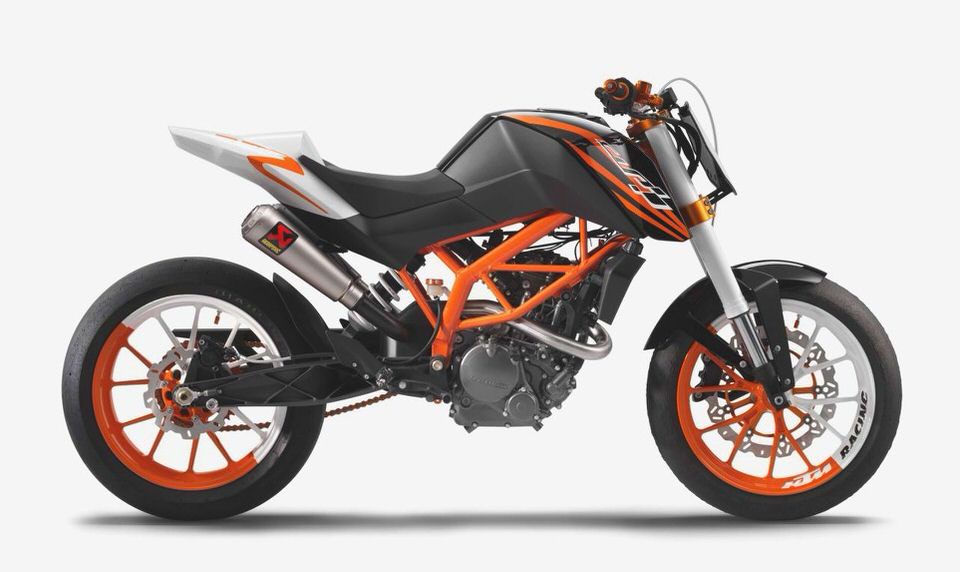
2005 KTM 125 SX – KTM 250 SX Motocrossers – Test Ride – Review – Dirt Rider
Tuesday, February 24, 2009
Many times when a manufacturer has a great engine, it changes it for the next model year anyway, and sometimes that insistence on change bites the factory hard. KTM two-stroke motocrossers had gnarly motors in 2004, so the Austrian company kept motor upgrades to a minimum. Instead, it spent its R-D time and budget working out a new frame and suspension.
The orange engineers found that the center part of the 2004 frame was able to twist under a load, so vastly larger oval tubes make up the new frame from the swingarm pivot area to the upper shock mount. That mount has been moved inboard, so the reservoir no longer rubs the rider’s boot. KTM also made major strides with the fork, tracing some traditional harshness to the shape and construction of the inner and outer fork tubes.
Dimensional changes to the tubes and the bushing arrangement result in much smoother action. KTM claims it can use three times more valve shims than in ’04 and still have smoother action. Stiffening the frame and solving the inherent fork issues made the job of shock development a much easier one. We felt KTM’s suspension made a huge jump forward from the 2003 to the ’04 models, but the leap to ’05 is even larger.
The changes affect every full-size model, so the entire KTM lineup should have suspension and handling improvements equal to the 125 and 250 SX we tested. 250 SX Motor Changes
KTM did make significant updates to the 250 SX engine, but it wasn’t looking for additional power; rather it wanted to train the horses it had. This is the third year for the current engine design. It came off the drawing board a fire-breather, with gigantic power output. The ’03 was proof positive that you can have too much of a good thing.
The ’04 had much better manners, but KTM still felt it was a good idea to add a heavier crank and boost the compression. Even the two-ring piston—which should extend ring life—is intended to make the bike easier to ride. This latest-generation engine specification also required different carburetor jetting.
All of the changes are intended to make the engine stronger down low as well as more tractable.For the midsummer heat wave we endured during testing, KTM leaned out the jetting with the optional jets that come with the bike. The stock 42 pilot jet was replaced with a 40, the NOZF needle with an NOZG (both with the clip in the fourth position) and the 168 main jet with a 165. With that jetting, the engine ran cleanly and was responsive from right off idle.
Naturally, the engine hits hard in the middle-rpm range and still pulls like a monster on top—a few testers felt it accelerated harder than a 450 four-stroke! The nice thing about the ’05 is that you can ride with the motor under the gun and still giggle like a maniac at the acceleration, or ride in stealth mode at smaller throttle openings and lower rpm and have it still pulling smoothly but tamely.
For instance, we could clear a big tabletop at I-5MX Park in the Hungry Valley State Vehicular Recreation Area in Gorman, California, in either third or fourth gear: That’s a pretty flexible engine. As with any two-stroke, the KTM likes a loamy or sandy track better than a hard and slick one, but the sub-220-pound wet weight, snappy power and slender overall feel ensure the bike remains competitive regardless of the starting line you are on.
KTM has taken unprecedented steps to make sure you can dial in power suited to your style and track conditions. The power-valve governor has a dual-rate spring, with a small spring inside a larger one. The bike is delivered with a medium internal spring installed, but it comes with a lighter and a stiffer spring in the parts kit. We tried all three, and we preferred the lightest spring. As if that weren’t enough, the preload on the power-valve spring is externally adjustable.
Going in one full turn delays the power-valve opening 250 rpm. We added one-half turn of preload with the light spring.The shifting is very precise, and the hydraulic clutch is awesomely easy to pull while offering instant and perfect feedback. KTM also changed the balance factor on the crank, so the engine feels a bit smoother running, too.As with the 125, we felt no need to swap around the triple clamps to quicken the steering.
Our bike was cooperative when the rider wanted the inside line. Jumps are easy, and the bike isn’t really picky about jump faces. It is easy to control in the air.
Even packed and pounded clay faces were OK. KTMs can come with a variety of Bridgestone tires, and our bike wore an M59/M70 sand/mud-oriented set that worked great when the track conditions were soft but naturally affected our commitment to turning on jump faces once the ground got harder. Chassis Changes
The 250 SX received the same chassis and suspension changes as the 125 SX, which means it feels more solid and precise on the track. As with the 125, the 250′s shock shaft is changed to flow oil differently, since WP continues to try to keep the two pistons in the shock working separately. Ideally, the second piston should be effective only late in the shock stroke.
All shock absorbers are speed sensitive, meaning they resist fast movement more than slow movement; but the whole idea of the PDS shock, with its double-piston setup, is also to make the shock position sensitive. By using the second piston, it gets much stiffer late in the stroke, so the bike can perform without having a linkage. Each year KTM and WP get the concept worked out better. We changed little on the 250, since it absorbed the bumps well yet had much improved bottoming resistance.
We kept our eye on the sag (110mm), and at I-5MX we upped the high-speed compression for heavier riders. Fast and light riders tended to want the settings returned to stock, which is a pleasant change for KTM.In the past, riders accustomed to the suspension setup of Japanese bikes have found KTM’s PDS system a little unusual. The ’05s don’t require anything odd other than 10mm more sag than most Japanese bikes.
Even when you have a bike with a linkage, there are two aspects of measuring sag. Getting the correct sag number with the rider on the bike is always important, but you should check how much sag the bike has with its own weight. Around 25mm is normal for most bikes; the KTM likes a little more. Otherwise, you adjust the KTM as you would any other modern motocrosser, and for us stock was closer than ever.
Two-strokes still have a lot of appeal, and a super-strong runner that has a proven record of reliability and is exceptionally easy to care for is even more appealing. 125 SX Motor Changes
KTM has been serious about 125cc-class motocross, and this dedication has manifested in the 125 SX for several years now. In ’03, KTM was rewarded with first and second in the 125cc Nationals—the first such championship for a European machine. Happily, the lessons learned through racing and testing make an almost immediate transition to KTM production, and the changes put in production for ’05 have resulted in a greatly improved orange machine.
As far as the engine is concerned, KTM left a good thing pretty much alone. It was the most-powerful 125 of 2004 (Jan. ’04), and we expect that to be true in 2005. The new exhaust flange sparked up the response and allows the engine to pull longer before going flat on top.
The crankcase webbing is strengthened, but that change was mostly for 200cc model reliability, as it must deal with a higher torque load. The 200 SX is no longer in the lineup, but the EXC is.As always, the Katoom comes with a tool kit and extra jets. Our bike had a 45 pilot, a 1469G needle with the clip in the second position from the top and a 190 main jet. All of those jets were supplied with the bike, which is a nice touch.
With those jets installed (for temperatures of 90 degrees or more) the 125 SX starts effortlessly and carburetes very cleanly. As with most modern 125s, it likes a little fine-tuning with the air screw for tracks at different altitudes. We shot the photos at Joe Sutter’s private track only a few feet above sea level, then went to I-5MX the next day, which is more than a 3000-foot elevation change.
We ended up going out one-half turn on the air screw and turning the idle up a bit at I-5MX.The beauty of the 125 SX engine is the midrange. It has peak horsepower numbers above even those of the four-strokes, but the ripping, pulling midrange separates it from the other 125s. You never hear that the KTM bogged in a berm. You touch the light-pulling, self-adjusting hydraulic clutch, and the engine has the boost it needs.
Through the first three gears the engine is ultrastrong, and it pulls seamlessly from gear to gear. On some uphill runs, though, there is a noticeable gap from third to fourth gear. Otherwise, the KTM is as good as a 125cc two-stroke gets.The amazing thing is the KTM produces this kind of power yet seems oblivious to pump gas, and the top end will last most average riders at least a year! Chassis Changes
While we are fine with mere refinements of the engine, we were happy to see such far-reaching chassis alterations. It wasn’t so much that the ’04 model was bad but that it had enough of a different feel that the bike suffered in a shootout situation in which riders were jumping from one brand to another. KTM’s testing uncovered weaknesses it was able to rectify. By reducing flex in the frame, and equalizing the flex in the fork tubes, KTM ended up with much happier suspension and handling.
The tube change and the other fork upgrades have resulted in much-improved action as well as better bottoming resistance. We felt little need to play with fork settings. Even landing flat caused no problems and passed little shock to our hands.
I-5MX has a downhill straight section with choppy ruts before a jump that loaded the suspension pretty hard; the front got a little busy there, but we didn’t want to stiffen it up since it absorbed the other jump faces and braking bumps on the track. The rear hit a little hard in G-out dips, so we went in one-quarter turn on the high-speed compression.
After that, we could slam the dips without feeling the impact through our boots.With the suspension dialed in and the sag set to 110mm, the eighth-liter SX has excellent steering. It will grab the tiniest ruts and rail through a turn. Our bikes had the triple clamps set in the 20mm position—the same as in ’04—but the ’05 clamps allow the owner to remove the steering stem from the stock clamps and reverse it to have 18mm-offset clamps.
We’ve ridden with the 18mm offset, and that definitely gives you more trust in the front end and lets you change lines with no real conscious thought. Some riders feel the bike gets a little busy at speed, though, so it’s a good thing KTM lets you choose.We didn’t feel any need to change the offset, since the bike handled fine, jumped easily and landed lightly.
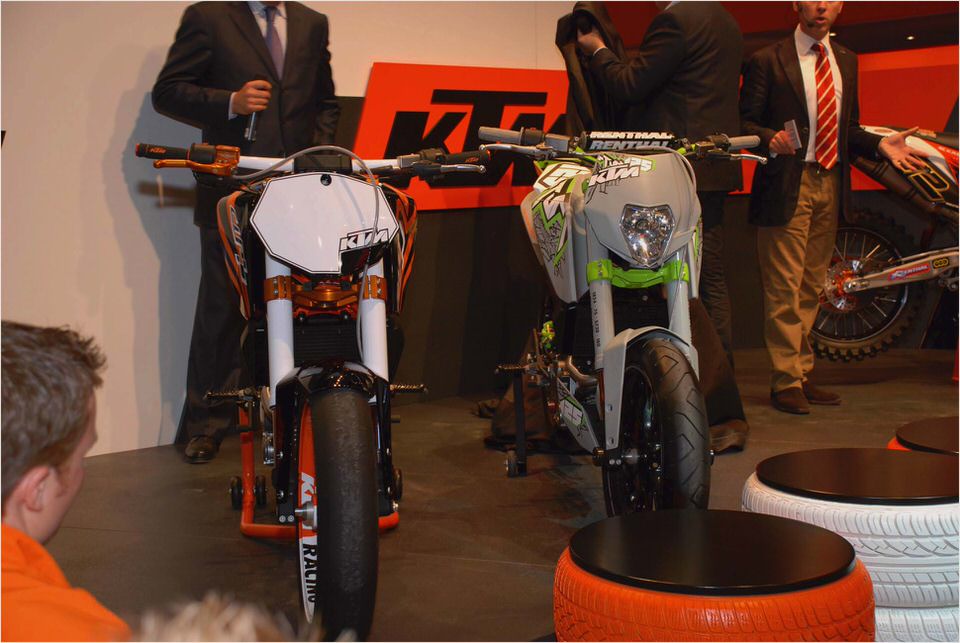

We did have some busyness on square chop, and the rear was a little bouncy in hardpack ruts with acceleration chop.Overall, the 125 SX is a fine motocrosser with vastly improved suspension, a more-solid and -accurate feel to the chassis and the strongest production brakes we’ve tested. We haven’t seen another 125cc two-stroke that will give you a better chance on the start when you have to run with 250cc four-strokes! Opinions
250 SX
Even though I have been spending most of my time on 250cc four-strokes lately, I was able to jump right on the KTM 250 SX and go fast. We measured the sag before I rode the bike, but the rear still felt a bit high, so I had another turn taken off the spring. Then the bike settled on the straights and didn’t dive when I was braking for turns. I could grab the tiniest inside ruts, too.
I swear this bike feels faster than the 450cc four-stroke I’ve ridden. I helped test the power-valve springs, and I liked the lightest one the best. I could race this bike easily—I had a lot of fun on it.
Cameron Heisser/5’10″/155 lb/Intermediate It’s no secret I am a four-stroke fan, but this is one fun two-stroke. I found it a little intimidating on packed and slippery tracks, but it is a grin-inducing blast when there is some loam to the track surface. I was able to get the suspension working fine for me, but I think it could have been better with one step up in rear-shock spring rate for my weight.
KTM sent me one of its taller seats, and while I didn’t really feel it was critical, it did make the transition to standing easier. Most important, the added cushion improved the feel of the rear suspension out of choppy sit-down turns. This is one two-stroke I’d like to have around.
It is powerful, light, skinny and easier than ever to ride.
Karel Kramer/6’1″/200 lb/Novice 125 SX
I have many hours in the saddle of a 2004 KTM 125 SX. Every time I ride one I am so impressed by how much faster it is than any other 125cc two-stroke. Despite the fact that KTM made only small changes, the ’05 125 SX is a lot faster than the ’04 model; it’s even more of a rocket ship than it was last year.
The suspension has also been changed for the better. It feels much more plush and is smoother over big and little bumps. Really, any way you look at it, the Katoom has the complete package.
If you are in the market for a 125 two-stroke, you won’t find a better one than the KTM.
Sean Friday/5’5″/120 lb/Novice The KTM 125 SX has always been the powerhouse in the 125 class. The 2005 is no different: On the track it feels really fast, and I love the crisp smooth power it has. The motor characteristics are really rider-friendly, and I never found myself searching for power.
The jetting was spot-on, and the KTM never missed a beat. The new WP suspension worked better than last year’s equipment, but it still gave me a nervous feeling. I had a hard time getting the bike turned on flat, hard-packed corners as the front end never seemed to settle.
I softened up the fork a few clicks, which seemed to help, but I still had a tough time getting it to turn without anything to use as banking. The shock worked OK, but it seemed to blow through the stroke in rough conditions. Overall, I think the 125 SX is a decent bike; I just feel it still requires much more setup time than any of the Japanese bikes.
If you can get the setup right on the KTM, then you’ll have a winner for sure.
Corey Neuer/5’11″/165 lb/Intermediate
More 250 two-stroke motocross bike tests:
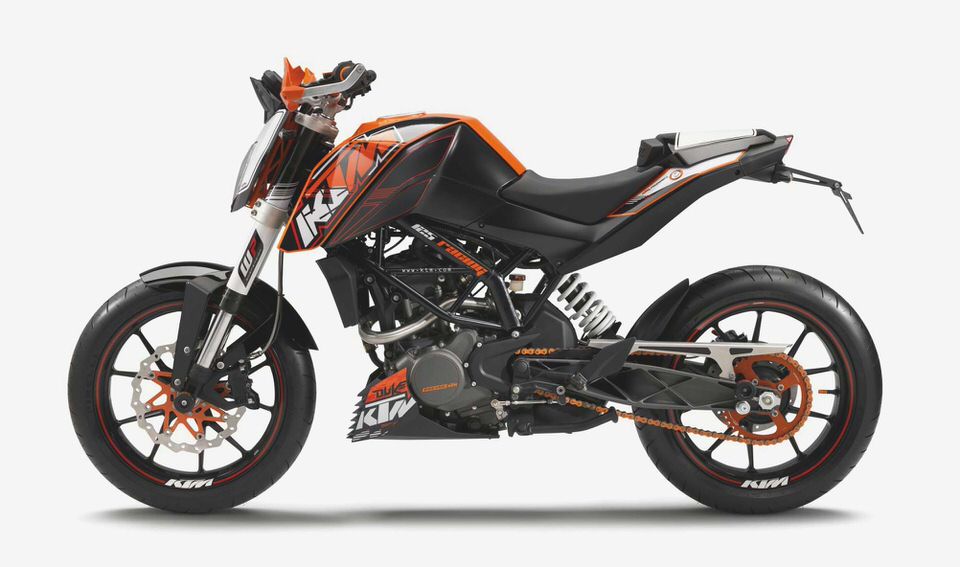
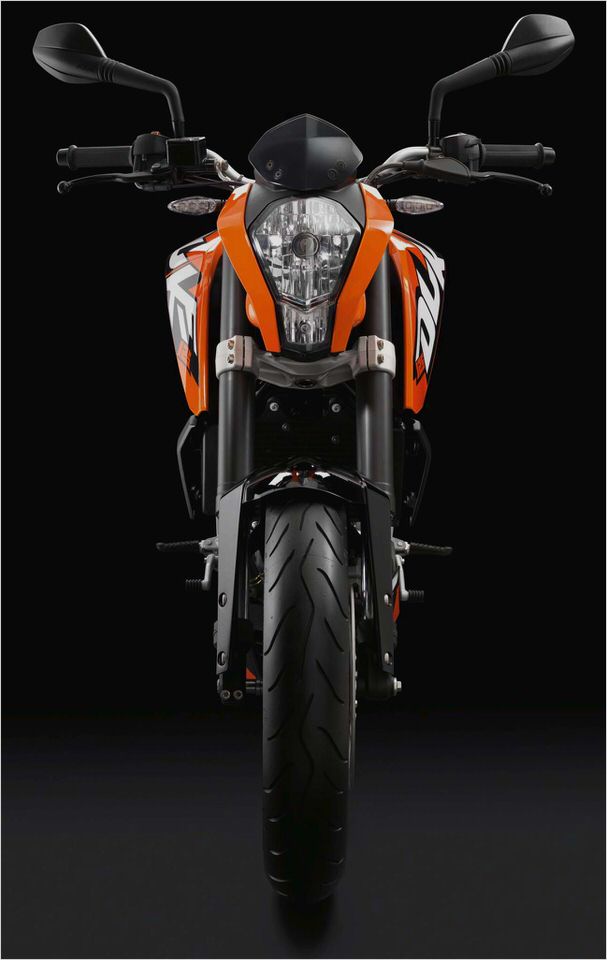
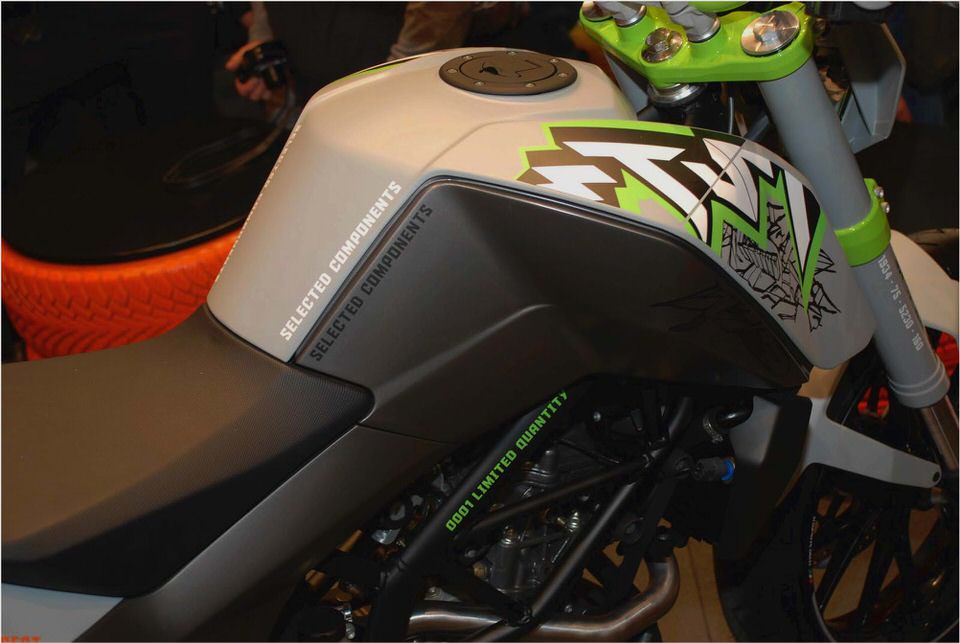
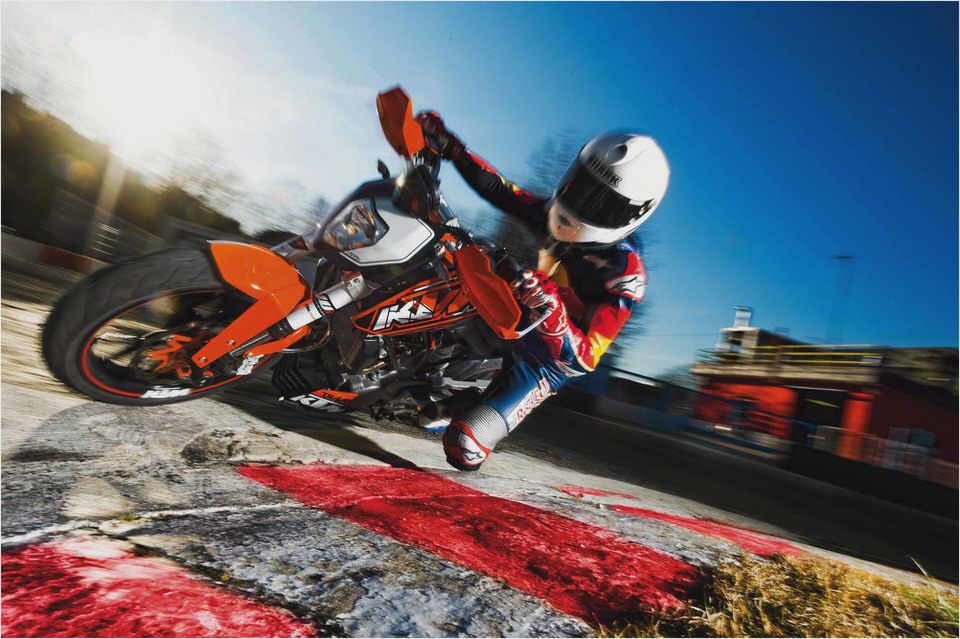
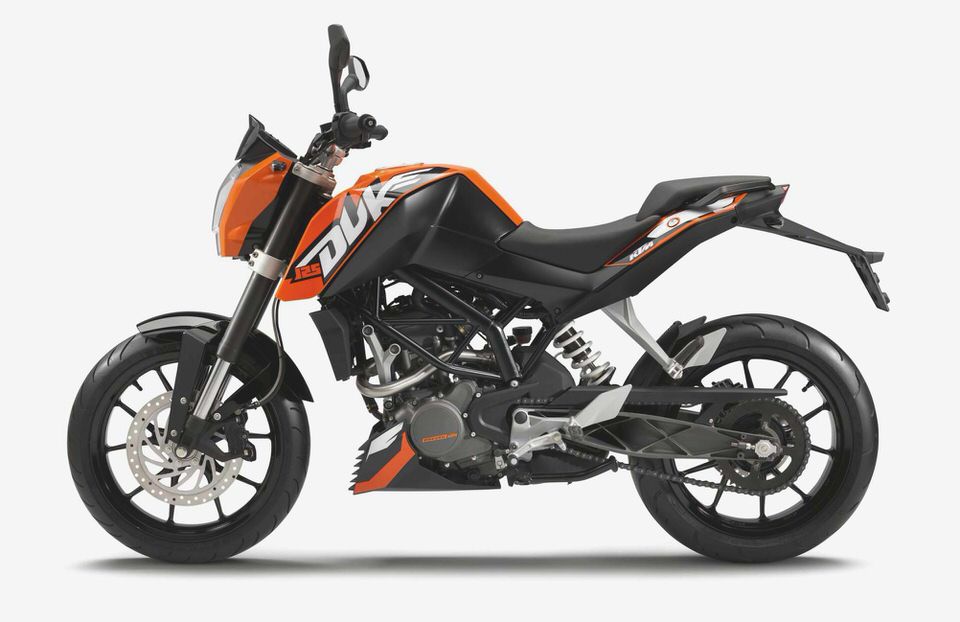
- Scotts KTM 250 450 500 530 Steering Damper Kit KTMtwins.com
- KTM 990 Supermoto T
- KTM Superduke
- 2012 KTM 350 SX-F Only Trail Bikes!
- 2006 KTM 625 SMC Walkaround In HD DIY Reviews!
